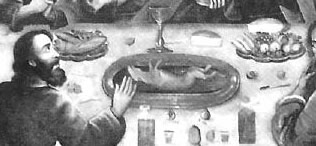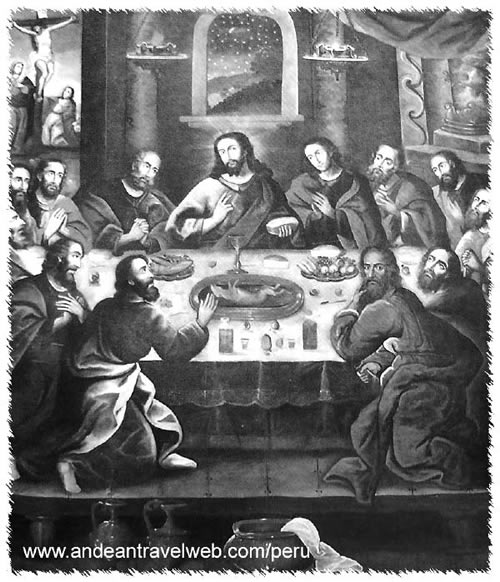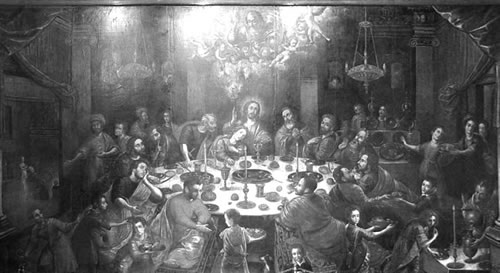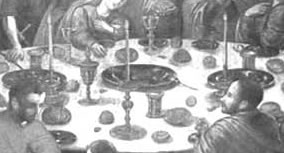Excerpt taken from "Why They Changed the Bible", pages 20-25.

|
Excerpt taken from "Why They Changed the Bible", pages 20-25. |

|
|
3
THE GUINEA PIG OF GOD During the summer of 1985, Deborah and I attended our second Summer Institute of Linguistics (SIL) at Seattle Pacific (Christian) University. One fine day an instructor presented the class with this situation: "Suppose you were in a culture that had never seen a sheep. The Bible has many verses that talk about sheep. How would you translate those verses?" The truth is you only have two choices. You could go into great detail describing a sheep, and make up or transliterate8 a word for "sheep" using the rules of their language. Or you could try to find a "dynamic equivalent" for sheep in their culture. They taught us that Dynamic Equivalence is a method for describing things our target group has never seen or understood in their culture, using words and concepts they are familiar with. To an extent, everybody does that, describing things we don't understand in terms of what we do understand. But our goal was more lofty: that anyone in a foreign culture could pick up a book we translated and instantly understand the ideas and basic meanings, written as if a person from their own people group had translated it. Could we find a dynamic equivalent for "sheep" in a jungle? Most said "Yes!" Out of the whole class, Deborah and I were the only ones who wanted to use the Bible term and teach the people about sheep. Everyone else wanted to find a simple dynamic equivalent in their culture instead and pass that off as scripture. I bet you can hear my emotions, can't you? I do feel about this strongly. But let's think about this. Let's say you decided to go the Dynamic Equivalence (DE) route. You would look for a number of traits the scriptures refer to, that define "sheep." Then you would take that checklist and compare it to the animals of the target culture and look for the closest match. That would be your cultural substitute for a sheep. Back in 2002 I wrote a tongue-in-cheek article called "What Will You Do When They Know It's Not True?"9 In it I made up a story about a missionary who decided a good dynamic equivalent for "sheep" was "guinea pig." But after he had translated, printed and taught an entire Bible full of dynamic equivalents, one of the converts went to school and found out what the Bible really said. It changed his whole perspective! He was angry. He could no longer trust the missionary, and after he showed the truth to his people, none of them could trust him, either. So the missionary went home in disgrace. My imaginary missionary made a huge mistake. He said to himself, "I don't need to teach these people all about Israel, the Hebrews and their culture." It's true that isolated cultures may not know the difference for years. But when they find out, I asked, "What will you (the missionary) do when they know it's not true?" Now I had never seen a guinea pig substituted for a lamb. I was trying to be funny and absurd enough to make the point that we can't go willy-nilly changing God's holy words. I never thought anyone would actually do something that silly! A few weeks after the article was published, my mom read it and emailed me. She had just returned from a trip to Peru. In the Cathedral of Cusco, Peru she saw a painting of "The Last Supper" by Marcos Zapata.10 And guess what? He had substituted a guinea pig for the lamb! The apostles and Jesus were preparing to eat guinea pig (called cuy), an Andean sacrificial animal of Incan religion, instead of lamb. And they drank chicha, a religious ceremonial drink made of fermented corn, instead of wine from grapes. See for yourself! 

Zapata Another of Zapata's paintings at the Monastery of San Francisco in Lima, Peru, has cuy (guinea pig) on every plate; and they are also drinking out of Inca ritual cups. Similar paintings are found throughout Peru, Chile and Northern Argentina. 
Francisco Cathedral in Lima, Peru. Note the Incan ritual cups. 
Whose sacrifice is being celebrated? Is it the only begotten Son of Jehovah God, or is it really just a whitewashed Incan sacrifice to devils? Would God like it if we falsely depicted Jesus as a sacrifice to Baal, Moloch, or to any other so-called "god"? Did John the Baptist say that the Lord Jesus Christ was the "guinea pig of God which taketh away the sin of the world"? Such dynamic equivalents blaspheme our Saviour. Now these examples were paintings, not the holy scriptures, that were changed with cultural equivalents. But this is a visible representation of the Roman Catholic principle, used all over the world, to blend pagan religions with Christian trappings, that is now labeled "Dynamic Equivalence."11 8) Transliteration is writing a foreign word in the letters of another language's alphabet. 9) See www.chick.com/ask/articles/themissionary.asp, or see Answers to Your Bible Versions Questions (2002, 2010), pp. 185-186. Available from Chick Publications. 10) Also known as Marcos Sapaca Inca (1710-1773). He was a native Quechua painter, born and taught Spanish painting techniques in Cuzco, Peru. He painted at least 200 paintings from 1748-1764. 11) Dynamic Equivalence is discussed in more detail in Chapter 13. |